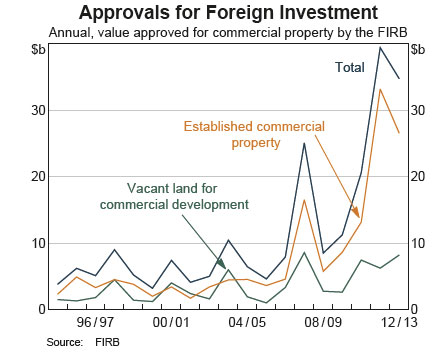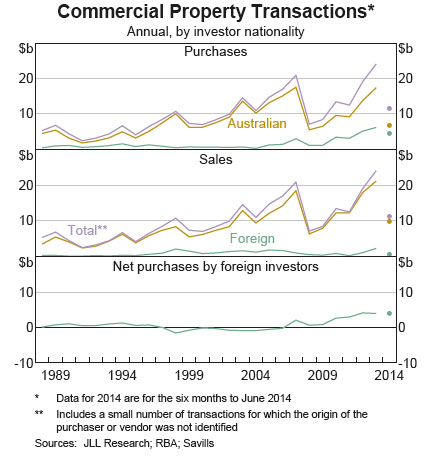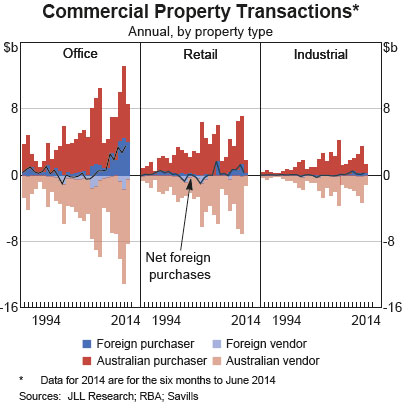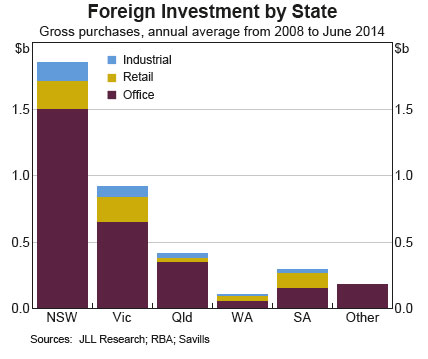APRA has written to ADI’s today highlighting issues relating to the banks’ commercial property exposures, following a thematic review of commercial property lending over 2016. They say that the risk profile of lending has often been hampered by inadequate data, poor monitoring and incomplete portfolio controls across these portfolios. They have written to individual lenders with specific requirements. APRA will conduct further work in this area during 2017.
 They provided an attachment with more detailed observations from the review and some of APRA’s key expectations in relation to commercial property lending.
They provided an attachment with more detailed observations from the review and some of APRA’s key expectations in relation to commercial property lending.
Underwriting Standards
Sound credit underwriting standards are fundamental to the safety and soundness of lenders, as well as the stability of the financial system as a whole. This is particularly the case in the area of commercial property lending, which has historically been the source of significant credit losses for the Australian banking industry. It is critical that ADIs maintain appropriate standards through the credit cycle, and are prepared to tighten those standards as circumstances dictate.
APRA has observed a general tightening of underwriting standards, especially for residential development lending, over the past year or so. This has not been uniform, however, and there is a need for ADIs to exercise particular care to ensure that they are not unduly accepting greater risk as other lenders step back.
The review also revealed evidence that some ADIs were justifying a particular underwriting stance based on what the ADI understood to be the criteria applied by another lender. Underwriting standards should be reflective of the ADI’s own risk appetite and not based on a potentially erroneous appreciation of a competitor’s criteria.
A summary of key observations follows:
Income producing investment lending
- Insufficient constraints on debt size – A key concern is where ADIs have not adjusted the minimum Interest Cover Ratio (ICR), used for debt sizing investment loans, as interest rates have declined. At this point in time, APRA does not intend to prescribe an approach to setting minimum ICRs for debt sizing purposes; however, it does expect ADIs to have thoroughly considered and addressed this risk. ADIs should similarly consider their policies in relation to Loan to Valuation Ratios (LVRs) in light of recent strong asset price growth.
- Debt yield as a complementary underwriting measure – Debt yield (net operating income to total debt) is used by some overseas banks as a key underwriting measure, but it is not commonly used within the Australian market. This metric, supported by prudent ICR and LVR measures as appropriate, could offer benefits to lenders as it provides a measurement of risk that is independent of the interest rate, amortisation period, and capitalisation rate.
- Need for greater focus on refinancing risk – A number of ADIs demonstrated only limited analysis of the risk in refinancing a facility at maturity.
Residential Development Lending
- Sponsors to contribute sufficient equity – A number of ADIs noted an increasing awareness of the use of mezzanine debt / quasi equity from third parties and reliance on material uplifts in land valuations to reduce the size of a sponsor’s contribution of ‘hard equity’. APRA expects ADIs ensure a sufficient level of ‘hard equity’ is at risk from sponsors.
- Presale quality and coverage – In the past year, some ADIs have tightened underwriting criteria for presales coverage following market concerns with regard to settlement risk. ADIs are now generally requiring qualifying presales equivalent to at least 100 per cent of committed debt and have tightened the proportion of qualifying presales permitted to foreign purchasers. However, there was still scope for improvement in a number of ADIs’ policies on what constituted a qualifying presale, and the thoroughness of analysis of presales achieved for particular transactions was sometimes lacking.
- Need to consider end product, location and quality – The consideration of potential marketability issues for properties, such as being poorly located, small apartments lacking in amenities and/or suffering from design issues, was not always evidenced in transaction analysis.
Portfolio Controls
A key finding from the thematic review is that many participating ADIs fell well short of expectations regarding portfolio controls for commercial property. This has been in part driven by an underinvestment in information systems, leading to challenges in extracting portfolio data. Ready availability of detailed and reliable transaction level data, appropriately aggregated, is a key component in obtaining a sound and complete understanding of the risk profile of the commercial property portfolio. Deficiencies in data hamper an ADI’s ability to implement and monitor underwriting standards and portfolio controls.
A summary of key observations follows:
- Availability of transaction data lacking – The identification, recording, tracking and reporting of key transaction characteristics, in a manner which can be readily aggregated, is fundamental to sound risk management. These transaction characteristics include asset type, geographic location, construction contractor and developer concentrations and key underwriting metrics such as ICR, debt yield, loan-to-development costs (LDC), presales to debt cover and LVR. Analysis of these transaction drivers helps an ADI to understand its risk profile at different stages of the cycle. A large number of ADIs were unable to readily provide reasonably basic portfolio information to APRA as part of this review.
- Portfolio limits can be improved – APRA expects that ADIs with commercial property exposures should manage not only the risk of individual loans but also consider build-ups in risk at the portfolio level. A deeper understanding of the portfolio can be particularly helpful for the Board and senior management in setting and monitoring portfolio limits, and adherence to the lender’s risk appetite, as market conditions change. One fundamental management control to prevent a build-up in risk is an overarching sector concentration limit, as per Prudential Standard APS 221 Large exposures. Better practice would be to also have sub-limits to control concentrations in riskier segments of the portfolio, such as lending for development or land. In addition, improvements in data and system capabilities would permit the establishment of a more targeted risk metrics and controls relating to key transaction drivers for the stage of the cycle.
- Better practice is for deep dives into heightened risk segments – A number of participating ADIs had reacted to perceptions of heightened risk in market segments by undertaking deep dive exercises, targeted stress tests and the provisions of additional targeted reports to key stakeholders. This was particularly noticeable for locations where there was considered to be increased settlement risk and had led, in some cases, to tightened underwriting standards for that segment.Identifying and managing exposures originated outside of standards
- Inadequate monitoring of exceptions to underwriting standards – Many ADIs fell short of APRA’s expectations with respect to monitoring exceptions to policy and underwriting standards in the commercial property portfolio. This has been a long-standing concern and many ADIs need to improve their capabilities in this area. Inadequate monitoring of policy exceptions/overrides potentially exposes the ADI to a build-up of risk outside of the documented underwriting standards, representing a shift in risk profile beyond the levels formally approved.
- Insufficient justification for deviation from standards – APRA’s review of transactions with higher risk characteristics, or outside ADI underwriting standards, indicated varying levels of qualitative assessment supporting the taking on of higher risk. Justifying lending decisions on the basis of ‘long-standing relationship’ or ‘good track record’ are insufficient, by themselves, to mitigate higher risk characteristics such as higher leverage or weaker presale cover, especially if these are outside approved underwriting standards.









